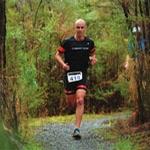
Top 10 Gems To Going Faster On Trails
26 October 2015, 3:34PM
Penny Comins
Heading out to the Manaslu Mountain Trail Race, Nepal meant I was looking for anything that could help me get through the eight stages, 216 kilometres and 14, 422 meters of elevation. I had the kit sorted; fitness was where it could be so I looked to technique. I knew that having an efficient technique would mean I was using less energy to move faster. Thus resulting in less time on my feet, faster day on day recovery and an overall more enjoyable experience.
I enlisted the help of head coach James Kuegler of CADENCE Coaching (cadencecoaching.co.nz) after his deep Cvof endurance events including Mont Blanc Marathon, my ultimate goal. Here are his top 10 gems to getting the most out of a trail for faster times.
1. Warm up your muscle memory and make sure all of the joints from your toes to hips are moving by walking on the different aspects of your feet. Keeping your heels on the ground, squat down so your bum is nearly on the ground. Kneel onto your heels, and sit cross-legged. A simple and fast way to get your body to recognize that the ground will be uneven and to react to it.
2. Have a proud, yet relaxed upright starting position. From here lean forward 5 to 10 degrees but not from the shoulders as many runners do. Lean from your ankles keeping the upright position. This pushes your centre of gravity forward and no more.
.jpg)
Photo © JTPIX
3. An efficient stride will always happen underneath your centre of gravity. Therfore, your stride will become longer relative to your speed. Not the other way around. Focus on landing with a relaxed foot and ankle at all times.
4. Cadence should be at a constant 85-95 strides per leg per minute. Count one leg and double it on the flat to check if you have fast enough feet. Then do the same over uneven terrain, up and down hills; it should all stay the same to be efficient. Shorten your stride length if you are not hitting this rate. It is important to be aware that this should not happen at the expense of lifting your heels off the ground.
5. Keep focused on your technique of being upright and open chested in the later stages of the race. People who are tiring return to a foetal position (hunched over with arms and head drawn in). If you see this make a storming pass and get closer to the podium. Heading out to the Manaslu Mountain Trail Race, Nepal meant I was looking for anything that could help me get through the eight stages, 216 kilometres and 14, 422 meters of elevation. I had the kit sorted; fitness was where it could be so I looked to technique. I knew that having an efficient technique would mean I was using less energy to move faster. Thus resulting in less time on my feet, faster day on day recovery and an overall more enjoyable experience.
6. If you think it is getting too tough running uphill try to hop on one foot. Known as the ‘Acid Test’; if you can hop on one leg then you can still run. Keep running until you lose efficiency and then walk. But walk in the same upright position with a short stride, a high cadence and an intensity that will allow you to easily resume running again. You have all heard the saying that once you start walking it is all over; this is because a long ‘trudging’ stride creates too much fatigue to feel comfortable getting back into a running rhythm.
7. Although not the direct line, slalom ski your way down the mountain to control your speed. Having control will mean you have an overall faster time and won’t jar your muscles; saving them for later. Don’t just weave down with the same stride length either. Come in to a corner and take tiny toe steps to slow the pace, apex the corner and traverse the gradient.
.jpg)
Photo courtesy of New Zealand Triathlon & Multisport
8. Always be looking for the Line of Least Resistance (LOLR). Keep your head high and look for the obstacles coming up. Always be thinking ‘do I have to go up the stairs or could I run beside them on a smoother track’, ‘do I go over the fallen tree where everyone else has or side step it staying low to the ground’? Don’t always follow the pack and keep your brain engaged to find faster lines. This also helps if you know the course. If you have time run the technical parts of the race beforehand.
9. Eroded parts of a trail will be the hardest packed and therefore have the most grip. This will often be the lowest side of the trail and may need more confidence to run this edge.
10. Wear gloves and use your hands as an extension of your legs and grab on to trees or obstacles to give support when descending. You’ll have better control meaning you can go faster.
If you are inetrested in more one on one tips from James or any of the other coaches from CADENCE check them out at cadencecoaching.co.nz
Originally published in NZ Triathlon & Multisport Issue 101, April 2015
